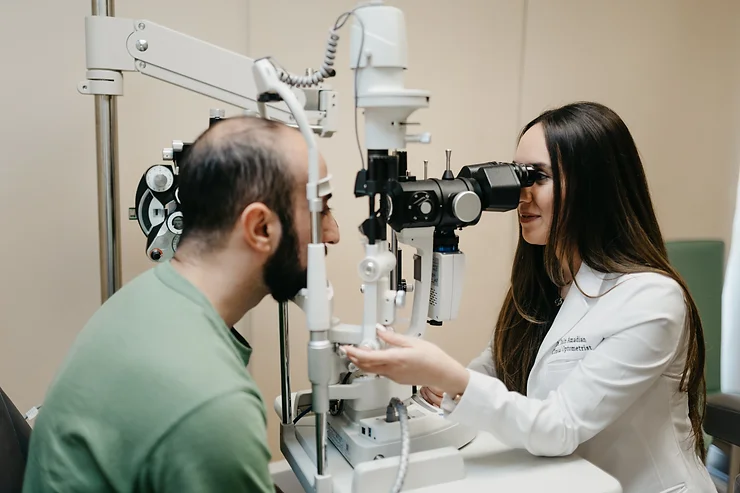
How to understand that you have nearsightedness?
If it’s hard for you to see distant objects clearly or you have trouble reading signs and recognize faces from a distance then you have myopia, usually known as nearsightedness.
At what age do symptoms appear?
Myopia often starts in childhood and progresses until the age of 18-21. According to statistics more than 30% of the world population has myopia and this number can grow in the future.
What are the contributing factors?
In increasing this number, genetics play a huge role, as well as some environmental factors.
These are: spending too much time in front of a screen and not spending enough time outdoors.
How to prevent?
But we have good news for you: myopia can be treated and managing myopia can begin at any age. But it is best to start early, i.e. as soon as you notice that you or your child can’t see distant objects clearly. The sooner you start treatment, the more chances you have to prevent or slow down the progression of myopia. If myopia has developed in your child in the first years of life, then it is better to start treatment from 4, and sometimes from 6-8 years.
The corrective lenses are the most spread treatment for myopia. Glasses or contact lenses can help you to improve your vision. How does it work? Lenses bend the light that enters the eye and allow it to focus properly on the retina. Although this type of treatment is safe, effective and non-invasive but it gives you short-term salvation for the problem and doesn't provide the ultimate cure.
Another type of treatment is Orthokeratology or Ortho-K for short. In this case, you wear special contact lenses at night that change the shape of the cornea and make your eyes focus properly when you look at something. Ortho-K makes slow the process of myopia progress and sometimes even makes myopia to regress. This treatment is suitable for children who are too young for surgery or don’t want to wear glasses.
Surgical options are invasive and carry some risks. But it’s also suitable for people with stable myopia. After this procedures vision improves without contact lenses.
So, Myopia is a condition that affects the quality of life. However, you already know that it can be treated effectively. If you or your child has myopia, talk to an eye care professional about the best treatment options available. Take your chance to improve your vision or your child’s vision and quality of life.








